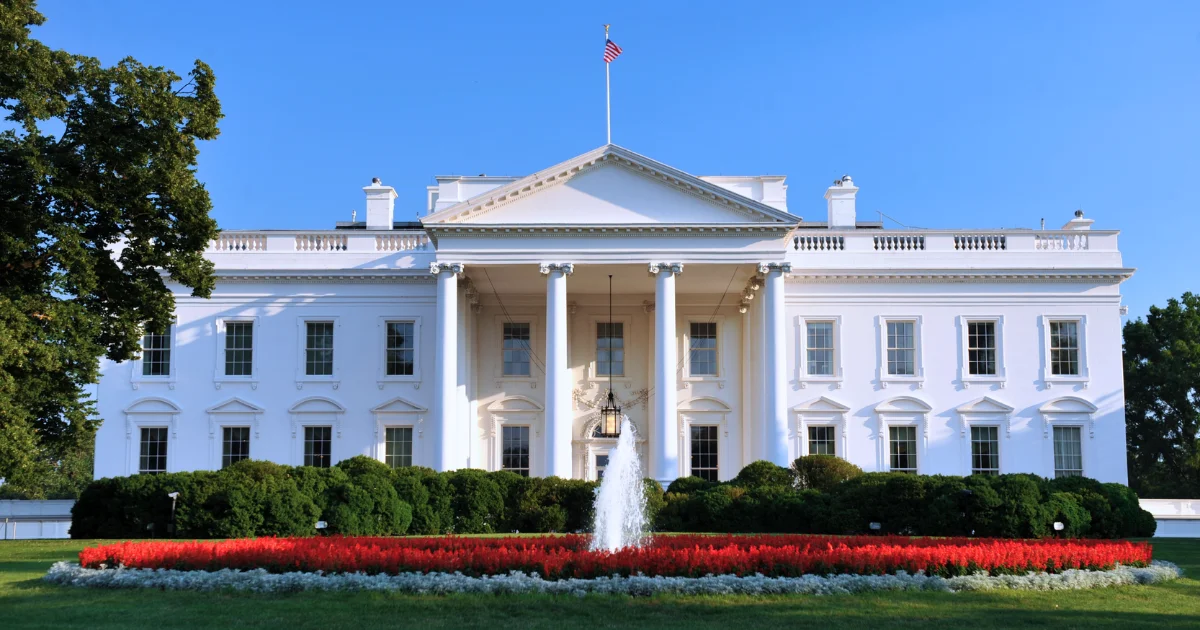Executive Orders have emerged as powerful instruments shaping the contours of U.S. immigration policy. Stemming from the executive branch, these directives hold considerable influence over a myriad of facets, from individual lives to the broader socio-economic landscape. Understanding their implications requires a nuanced exploration of their definition, historical roots, and the pivotal role they play in the dynamic tapestry of immigration policies.
Executive Orders, within the realm of U.S. immigration, are official directives issued by the President to manage and direct the operations of the federal government. These orders carry the weight of law but are subject to legal and constitutional constraints. The significance of these directives in immigration policies cannot be overstated; they have the potential to alter the trajectory of who enters the country, under what circumstances, and with what rights.
Delving into the historical context, the roots of Executive Orders in shaping immigration policies trace back through the annals of American history. Presidents have utilized these directives to respond to evolving socio-political landscapes, economic needs, and national security concerns. From the Chinese Exclusion Act in the 19th century to the more recent DACA (Deferred Action for Childhood Arrivals) program, each Executive Order reflects a chapter in the ever-evolving saga of U.S. immigration.
Understanding Executive Orders:
To comprehend the impact of Executive Orders on U.S. immigration, it is crucial to grasp their nature, authority, and historical context. These directives, issued by the President, derive their legitimacy from the executive’s inherent powers, granted by the U.S. Constitution. This authority empowers the President to manage and direct the operations of the federal government, including immigration policies.
While legislation requires congressional approval, Executive Orders allow the President to take swift action, responding to pressing issues without navigating the often-lengthy legislative process. However, this inherent power is not absolute; Executive Orders are subject to legal scrutiny and checks and balances embedded in the U.S. Constitution. Understanding this delicate balance is essential to appreciating the nuanced role Executive Orders play in shaping immigration policies.
The historical evolution of Executive Orders in immigration unveils their adaptive nature. From shaping exclusionary policies to addressing humanitarian concerns, these directives reflect the changing tides of public sentiment and geopolitical landscapes. By understanding this historical trajectory, stakeholders gain insights into the broader context that informs the issuance and impact of Executive Orders on U.S. immigration.
Key Executive Orders Affecting U.S. Immigration:
A deeper examination of Executive Orders reveals their specific impact on U.S. immigration. Notable directives include the DACA and DAPA programs, which sought to provide temporary relief to certain undocumented immigrants, especially those brought to the U.S. as children. The evolution of these programs and their subsequent legal battles underscore the complexities and challenges inherent in using Executive Orders to address immigration issues.
The controversial Travel Bans, aiming to enhance national security, also come under scrutiny. These orders, issued to restrict entry from specific countries, raise questions about the delicate balance between security imperatives and humanitarian considerations. Similarly, the Family Separation Policy, which sought to deter illegal immigration by separating families at the border, exemplifies the ethical and legal dilemmas posed by certain Executive Orders.
Examining recent developments provides a real-time understanding of how Executive Orders continue to shape immigration policies. The ebb and flow of these directives reflect the dynamic nature of U.S. immigration, influenced by evolving political, economic, and social landscapes. By dissecting these specific orders, stakeholders gain a comprehensive understanding of the intricate threads woven into the fabric of immigration policies.
Impact on Businesses and Economy:
The impact of Executive Orders on U.S. immigration extends beyond individuals to profoundly affect businesses and the economy. Work visas and employment-based immigration policies, integral components of the nation’s economic engine, are directly influenced by these directives.
Work visas, such as the H-1B visa for skilled workers, often face modifications through Executive Orders. These changes impact businesses’ ability to attract and retain global talent, influencing innovation, economic growth, and competitiveness. The delicate balance between protecting domestic employment opportunities and fostering a globally competitive workforce requires nuanced policy decisions, often reflected in Executive Orders.
Navigating the complexities of global talent attraction and retention becomes imperative for businesses in the wake of Executive Orders. The ability to adapt to evolving immigration policies directly correlates with an organization’s capacity to thrive in a dynamic economic landscape. As such, understanding the economic implications of these directives provides a roadmap for businesses seeking to navigate the intricate intersections of immigration and commerce.
Legal Perspectives on Executive Orders:
As Executive Orders wield considerable power in shaping U.S. immigration policies, understanding their legal underpinnings and the mechanisms for review is crucial. The Constitution grants the President the authority to issue Executive Orders, but this power is not unchecked. The delicate dance between the executive, legislative, and judicial branches ensures a system of checks and balances.
The concept of judicial review plays a pivotal role in scrutinizing the legality and constitutionality of Executive Orders. Courts have the authority to interpret and assess the adherence of these directives to existing laws and the Constitution. This legal scrutiny acts as a safeguard, preventing overreach and ensuring that Executive Orders align with the fundamental principles enshrined in the nation’s founding documents.
The dynamic nature of U.S. immigration policies often leads to legal challenges and debates over the constitutionality of Executive Orders. The judiciary’s role in interpreting the law and safeguarding individual rights becomes especially pronounced in this context. Legal perspectives on Executive Orders illuminate the fine line between executive authority and the protection of constitutional rights, providing a framework for understanding the complexities inherent in these directives.
Navigating Changes: Insights for Immigrants:
For individuals directly impacted by shifts in U.S. immigration policies, navigating changes requires strategic insights and a proactive approach. This section serves as a compass, offering guidance to immigrants facing the uncertainties and opportunities arising from Executive Orders.
Understanding the policy implications of Executive Orders is paramount for individuals seeking to adapt to the evolving landscape. Policy changes, such as alterations to visa programs or eligibility criteria, can have profound effects on an individual’s ability to live, work, or study in the United States. By staying informed and engaging with legal and immigration professionals, individuals can better navigate the complexities and make informed decisions.
Strategies for adapting to shifts in immigration policy encompass a range of considerations. From staying abreast of policy changes to exploring alternative immigration pathways, individuals can take proactive steps to safeguard their status and pursue their goals in the United States. This section offers practical insights and resources, empowering immigrants to make informed decisions in a landscape shaped by Executive Orders.
Conclusion:
In conclusion, the multifaceted impact of Executive Orders on U.S. immigration is a dynamic interplay of legal, economic, and social factors. We’ve traversed the historical roots, delved into the legal nuances, and explored the specific directives that have shaped the nation’s approach to immigration. As the United States grapples with evolving challenges and opportunities, understanding the far-reaching consequences of Executive Orders provides a foundation for informed discourse and decision-making.
The perpetual ebb and flow of U.S. immigration policies, influenced by Executive Orders, necessitates a nuanced perspective. While these directives have the power to reshape the immigration landscape, they are subject to legal scrutiny, public discourse, and the ever-changing dynamics of a diverse and dynamic society. As we anticipate future changes, acknowledging the intricate dance between executive authority, legal frameworks, and societal values becomes paramount.
Frequently Asked Questions:
How do Executive Orders differ from Legislation?
Executive Orders and legislation differ fundamentally in their origin and authority. While legislation requires approval from Congress, Executive Orders emanate from the President’s inherent powers, granted by the Constitution. Legislation is a lengthier and more comprehensive process involving debate and approval by both the House of Representatives and the Senate.
Can Executive Orders be Overturned?
Yes, Executive Orders can be overturned, modified, or nullified through various mechanisms. Judicial review plays a crucial role in assessing the constitutionality of these directives. Additionally, subsequent Presidents have the authority to issue new Executive Orders that counter or revoke previous ones. Legislative action, such as the passage of laws by Congress, can also impact the effectiveness of Executive Orders.
How Quickly Do Executive Orders Take Effect?
The speed at which Executive Orders take effect varies. While they provide the President with a mechanism for swift action, the implementation timeline can be influenced by legal challenges, logistical considerations, and the complexity of the policy changes. Some Executive Orders may take effect immediately, while others might involve a phased implementation process.
This set of Frequently Asked Questions aims to provide clarity on common queries surrounding Executive Orders and their role in shaping U.S. immigration policies. Understanding these nuances contributes to a more informed and engaged public discourse on the intricacies of immigration governance.










